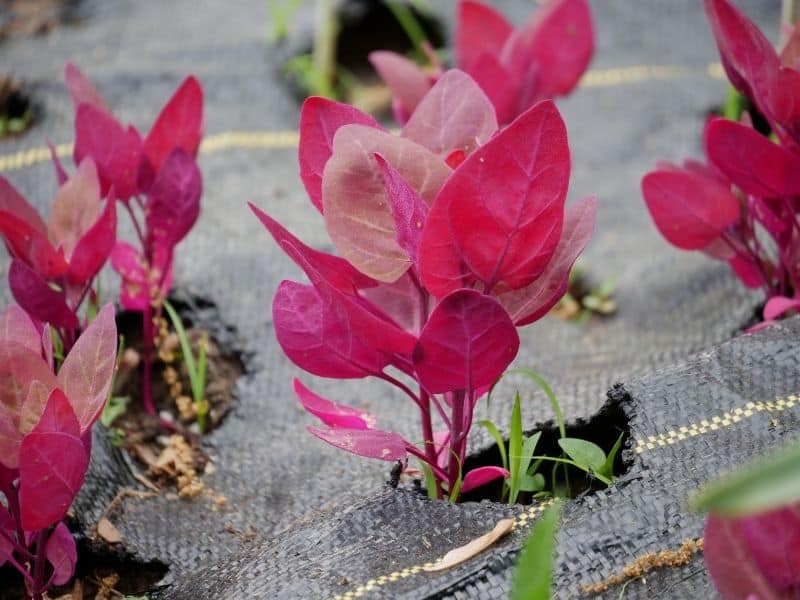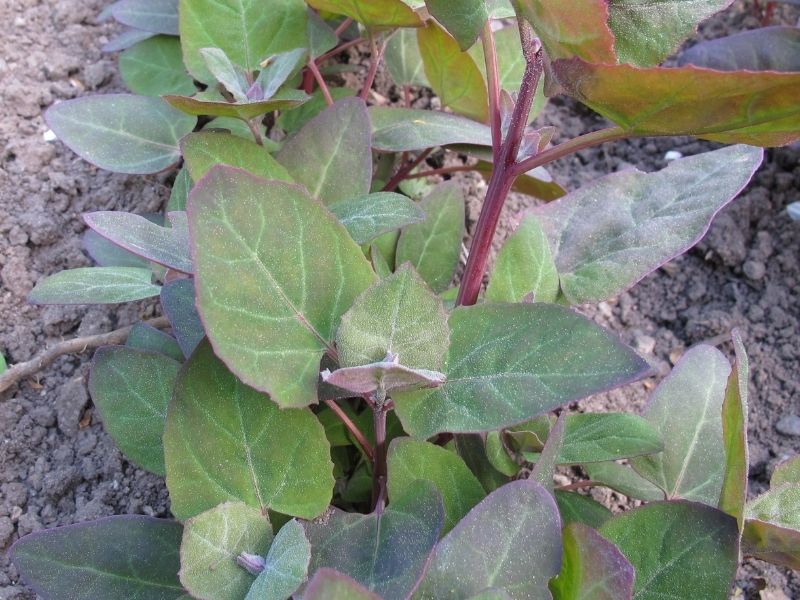Orach (Atriplex hortensis) is a cool-weather green from the amaranth family. Sometimes known as saltbush, orach has a mild yet tangy flavor that is often compared to spinach. Orach produces arrow-shaped leaves that can vary in color from green to deep red. The plants grow upright and can reach six feet in height. If you want to enjoy some beautifully colored (and of course, delicious) soups this spring, here’s how to grow orach.

How To Grow Orach Guide
Also known as mountain spinach, French spinach, giant lambs quarters, and orache, orach is a must-have for every garden.

Where to find orach seeds
Orach seeds are sometimes difficult to find, as many times, they are placed under the herbs section in the seed catalogs, rather than the vegetable section.
Here are a few places where you can get orach seeds:
- Amazon
- Baker Creek has a gorgeous mix of radiant colored orach
- Johnny’s selected seeds
Orach varieties
Three varieties are usually offered:
- green-leaved
- yellow-leaved
- red-leaved
The green varieties usually have a milder flavor than the reds. Yellow or golden orach is quite popular in France and is considered sweeter and tenderer than the red and green orach.
Tips for growing orach
Orach grows best like most other greens – in cooler weather. In cooler regions, orach can be grown as a spring and fall crop and in warmer regions, this green will thrive during the winter months.
- The seeds can be planted directly into the ground or in large containers.
- Plant seeds approximately 1/4 inch deep, about 3 weeks before the last frost of the season. Orach is a fast-growing plant with germination typically occurring 12 to 14 days after planting (depending upon soil conditions).
- Plant orach in full sun and if the plant is allowed to reach its full height potential, do not place the plants where they will shade other plants.
- The soil should be well-draining and rich in nutrients.
- Ideal pH averages 6.5 to 7.0 but this plant will tolerate slight saline soil.
- To keep the flavor of the leaves mild, water consistently of about one inch per week.
- Once the plants begin to emerge, thin the plants to about two inches apart.
To keep a consistent growth for meals, seeds can be planted every couple of weeks from early spring to midsummer in milder regions.
How to care for orach
Pinch back the tops to keep the plants from growing too tall.
Remove the flowers to prevent the plant from going to seed.
Keep it watered, until it gets growing well. Later, you can forget about it, as it does pretty well in dry conditions.
How to save orach seeds
As the plants mature, you should keep removing the flowers, to keep the plant producing, but make sure you let a few plants go to seed. As soon as the seed spikes start to turn brown, cut them up and let them air dry. Then save them into a paper bag labeled for safekeeping.
How to use orach
For use in salads, pick the leaves when they are still young and tender or when they are about three inches in length. Larger leaves work well as steamed vegetables.
The plants will continue to grow after harvesting the leaves. For gardeners that have success with other greens like spinach and arugula, orach should flourish just as well.
Orach can be prepared in the same way as spinach and can also be a replacement in recipes where spinach is needed.
We LOVE red orach soup! It’s so fresh and colorful, and perfect to enjoy the garden coming alive in the spring. I’ll share my recipe in a few days, so make sure to come back to get it.
Orach pests
Orach is seldom bothered by disease and garden pests, however, in some regions, aphids can become a problem (here’s how to get rid of aphids).
FAQ about orach
What does Orach taste like
Orach has a mild flavor that tastes similar to chard or spinach. When cooked, it’s a bit salty, so be careful adding salt, as to not make it too salty.
Is orach a perennial?
No, orach is a hardy annual, that loves cool weather. But, while it’s not a perennial, it self-seeds easily, so once planted, you don’t need to plant again. If too many seedlings come up, you can easily pull them out (but why not get more of it and freeze it for later?).
What parts of the orach plant can you eat?
The young, tender leaves are great for salads, while more mature, leaves are tougher but great for soup making. The seeds are also edible, so if you have a lot of seeds, dry them grind them, and add the powder to soups or smoothies.
Orach is not widely known so if you are looking for something different for your garden this year, try planting orach and discover the unique flavor of this intriguing vegetable.




